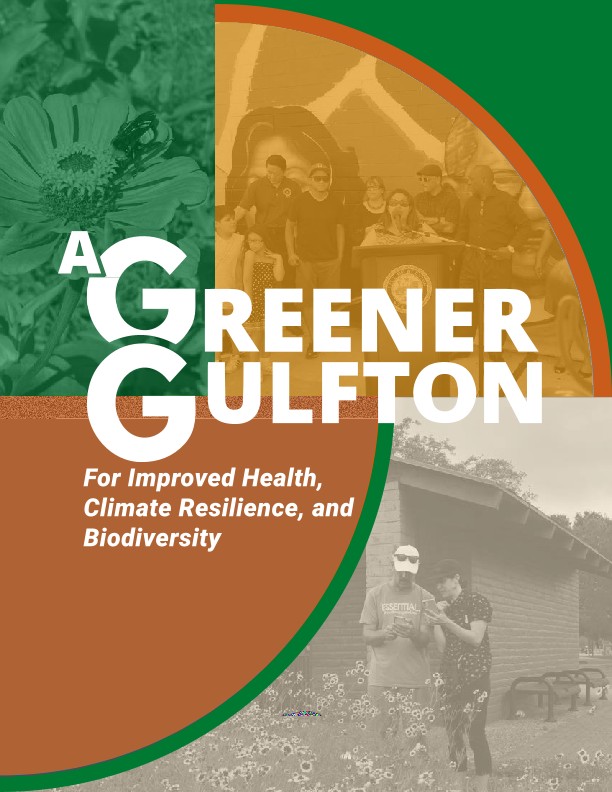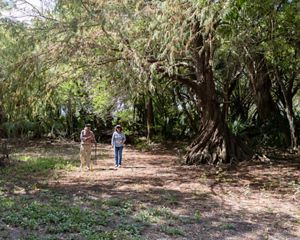Greener Gulfton
TNC, partners and community members are using nature to improve physical and mental health, adapt to climate change and support people and wildlife in Houston's Gulfton neighborhood.
Welcome to the Gulfton Neighborhood
The vibrant and diverse neighborhood of Gulfton in southwest Houston is often referred to as the city’s Ellis Island. This community, rich in culture and history, is home to more than 55,000 residents from all over the globe. Brightly colored murals adorn the streets, depicting people, flags, animals and plants to bring life to this urban enclave. Yet, despite its cultural wealth, Gulfton faces a significant challenge: a lack of green infrastructure.
At the neighborhood’s center is Burnett Bayland Park, bustling with families on the playground and soccer players on the field. However, beyond this park, the area is dominated by busy roads and long stretches of pavement that trap heat, making Gulfton one of the hottest parts of Harris County. In fact, a recent heat mapping project revealed that Gulfton is 17 degrees warmer than the coolest parts of the county—a stark reminder of the urgent need for more greenery.
Stay in the Loop.
Get local conservation stories sent right to your inbox.
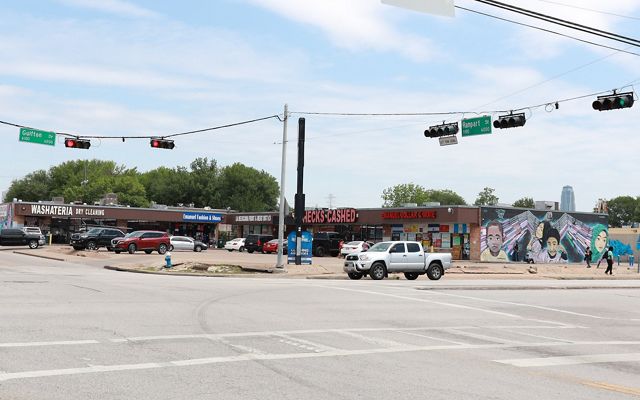

Community Vision:
Greener Gulfton is a diverse and vibrant community that is healthy, climate-prepared and connected to nature.
A Vision for a Healthier Future
Determined to combat these blazing temperatures and improve the overall health of their community, Gulfton residents, TNC, community leaders and others came together to create a vision for a greener, healthier neighborhood. This initiative, known as Greener Gulfton, outlines how incorporating nature can advance the community members’ vision for a more livable neighborhood. The first step in this ambitious plan was to design a suite of projects that would transform Gulfton into a climate-prepared and nature-connected community.
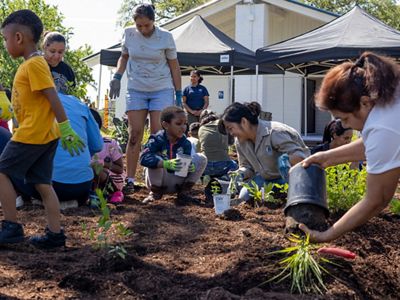
Chief among the plan are several major neighborhood interventions, including the master planning and redevelopment of Burnett Bayland Park, the creation of “cool corridors” using tree plantings and trellises for more narrow transit ways and environmentally friendly stormwater solutions in the southeastern portion of the neighborhood, which experiences regular street-level flooding.
Fast Facts
The Gulfton Neighborhood
-
58%
58% of Gulfton residents are born outside the U.S., with 75% born in Latin America.
-
50,000+
The majority of Gulfton's 50,000+ residents live in apartment complexes. On their patios, many residents grow plants reminiscent of their cultural roots.
-
17°F
Gulfton was the hottest neighborhood identified in the 2020 Harris County heat mapping campaign; it was 17°F hotter than the coolest part of Harris County.
-
20-45°F
The shade provided by vegetation has the ability to reduce surface temperatures by 20-45°F as compared to unshaded material surfaces.
-
8 acres
The Houston Parks Master Plan recommends 8 acres of park space per 1,000 people; 86 additional acres would need to be added to Gulfton to meet this recommendation.
Community-Driven Change
The vision for Greener Gulfton extends beyond local, physical improvements. The community also aims to enhance the mental and cultural health of its members by bringing back the wonder of nature, creating outdoor community gathering spaces and supporting a more equitable and biodiverse environment for everyone.
In 2024, Gulfton was awarded a portion of a $43 million federal grant to fund many of the much-needed interventions that are spelled out in the plan, including new tree-lined sidewalks, bike lanes and more parks and green space.



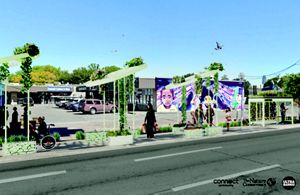
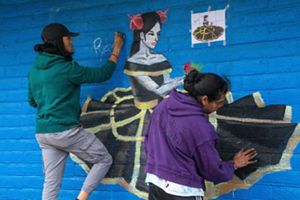

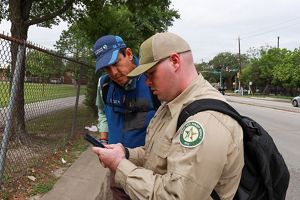


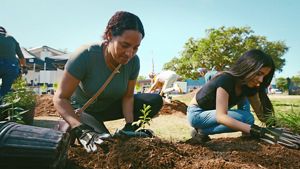

WORKING TOGETHER: In Gulfton, TNC Texas is working with Madres del Parque, a group of mothers dedicated to the health and wellbeing of the community. © Claire Everett

SEEDS OF CHANGE: Seeds from TNC's nature preserves are being used in Gulfton to establish native plants. © Claire Everett

EXPLORING OUTDOORS: Burnett Bayland Park is one of the few greenspaces where Gulfton residents can recreate in nature. © Claire Everett

BEATING THE HEAT: Shade structure renderings that incorporate nature for bus stops in Gulfton to help combat heat and attract biodiversity. © UltraBarrio

NATURE MEETS ART: Local artists adorn community buildings in Gulfton with artwork that blends culture and nature together. © April Frazier

BEARING WITNESS: Volunteers participate in a park clean-up and planting day at Burnett Bayland Park as part of the 2023 Witness Series. © Claire Everett

TREE SURVEY: TNC staff and members of the Texas A&M Forest Service use an application to survey available public space in Gulfton for tree plantings. © Claire Everett

SURVEY SAYS: TNC and Texas A&M Forest Service found that Gulfton could support more than 500 additional trees in public spaces. © Claire Everett

EXPLORING BIODIVERSITY: Gulfton residents gather for a bioblitz to identify species in Burnett Bayland Park. © Claire Everett

PLANTING TOGETHER: Community members participate in a tree planting to help green Gulfton. © Fin and Fur Films
Beyond Gulfton
Our work on nature-based solutions does not start and stop in Gulfton. What we have learned through this community-led effort is expanding to other parts of Harris County to educate leaders on the value and function that nature plays in infrastructure planning. In 2024, TNC supported a successful resolution in Travis County that states nature-based solutions must be considered in the implementation of all County-funded projects.
Likewise, we’re working in Dallas and San Antonio to ensure nature is integrated into City projects. We hope that the nature-based solutions implemented in Gulfton will serve as a replicable model for other communities across the nation and beyond to clean and cool air, provide additional green space and support species, because everyone can benefit from what nature provides.
Download
Additional Resources
- Community Summary (English) (.pdf)
- Community Summary (Spanish) (.pdf)
We Can’t Save Nature Without You
Sign up to receive monthly conservation news and updates from Texas. Get a preview of Texas’ Nature News email.


